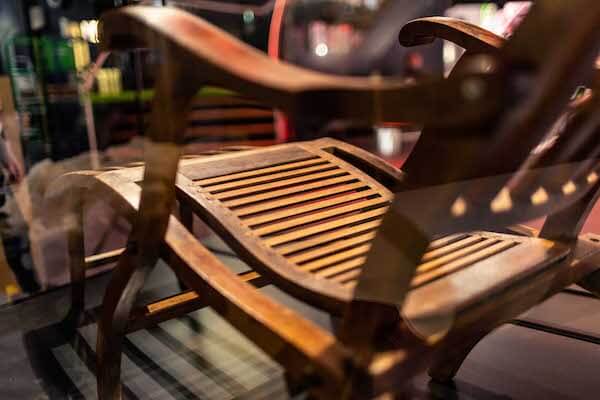Titanic Belfast will re-open on Saturday, March 4th, after a month-and-a-half-long closure and when it does, visitors will be able to see an exciting array of new artifacts that are connected to the famous ship.
This news item contains affiliate links, and I may earn compensation when you click on the links at no additional cost to you.

They include an original deck chair along with the world-famous violin, which belonged to the ship’s hero musician, Wallace Hartley, described as one of the “rarest and most iconic objects of the 20th century.”
View Hand-Curated Trail Maps of Northern Ireland's Best Walking Trails

The German violin was a gift from Hartley's fiancée, Maria Robinson.
The 1880 circa instrument contains a tail plate bearing a silver hallmark Chester, 1910, and engraved with the words: “For Wallace on the occasion of our engagement, from Maria.”
The deck chair was recovered from the ocean's surface by the Mackay-Bennett, the first of four ships chartered by the White Star Line to search for bodies after the sinking.

This surviving one, like the others, bears the distinctive insignia of the White Star Line on the headrest, along with a brass name tag holder on the rear.
It is one of six known to have been plucked from the sea after the tragedy.
These and a number of other artifacts will form the museum's latest collection, the first time they've been on public display.
More Items from the Rare Collection
The collection also includes a Plan of First Class accommodation, which was issued exclusively to first class passengers to help them navigate the luxury liner.

The pamphlet belonged to Ellen Bird, the personal maid to Ida Straus, whose husband, Isidor, owned Macy’s department store in New York.

Miss Bird's cabin, C-97, was marked with a cross and was located directly opposite the Straus's lavish stateroom numbered C-55-57, which had its own bedroom and separate sitting room.
Ida and Isidor Straus died side-by-side after Mrs. Straus refused a place on a lifeboat.
She gave Ellen her fur coat and insisted that she get on a lifeboat instead. Ellen survived the sinking and kept the plan until she died.
Other original Titanic artifacts on display for the first time include items belonging to third-class passenger Malcolm Joakim Johnson, including his personal pocket watch which survived the sinking and was recovered from his body.

The hands of the corroded Omega watch are frozen in time at 1.37 a.m., the exact moment he was immersed into the icy waters of the North Atlantic.
Johnson, the owner of a successful construction business in Minneapolis, had traveled to Sweden to buy his childhood home but failed.
He was scheduled to travel back to the U.S. on the White Star liner Adriatic, but was transferred to Titanic at the last minute due to the coal strike of April 1912.
He died in the sinking and his body was recovered by the Mackey-Bennett and taken to Halifax.

A photograph of him and his manifest ticket, which is stamped 10th April 1912 (the one originally assigned to the Adriatic) is also included in this fascinating new collection.
A document of great importance, historians say it was one of the first things that Johnson retrieved from his cabin together with his luggage ticket.
On the reverse are instructions in several languages describing how the ticket should be displayed upon landing at Ellis Island, New York.

A set of five rare original glass plate photographs of Titanic’s launch in Belfast on May 31, 1911, will also be on display.
Judith Owens MBE, Chief Executive of Titanic Belfast said: “We are honored to have been entrusted to display these extremely rare artifacts connected to RMS Titanic’s story.”
They are of great historical significance and will be very powerful in helping visitors make emotional and human connections to the stories of Titanic’s passengers and crew as part of the reimagined Titanic Experience.”
Other Original Titanic Artifacts on Display
Lifejacket
An original Titanic artifact called the Fosbery life jacket is also on display. It came from an unknown Titanic victim.

Only 12 lifejackets remain in the world, out of a total of over 3,500 that were onboard the ship.
Binocular Box Key
Keys from the binocular box key belonged to Second Officer David Blair who was reassigned just before Titanic’s maiden voyage.

Due to his hasty departure, he inadvertently kept the keys in his pocket, one of which belonged to the binocular box. Lookout Fred Fleet, who survived, told the official inquiry that if they had binoculars, they would have seen the iceberg sooner.
When asked how much sooner, Fleet replied: “Enough to get out of the way.”

Other items from this fascinating new collection include a letter to Wallace Hartley from his parents as well as a letter from a friend; a sheepskin coat belonging to Mabel Bennett, a stewardess on the Titanic; a walking cane belonging to Ella White, a wealthy and eccentric widow; a silver hip flask belonging to Helen Churchill-Candee, a 53-year-old author, and a letter written by the Reverend John Harper, a Scottish Baptist pastor.
The Titanic story is being enhanced this year with the introduction of ‘The Pursuit of Dreams,” a new theme that combines immersive new technology along with the museum's original maritime heritage collection.
Titanic Experience Reimagined from TitanicBelfast (by BeingOnline) on Vimeo.
To book tickets for the new Titanic Experience, visit titanicbelfast.com.

